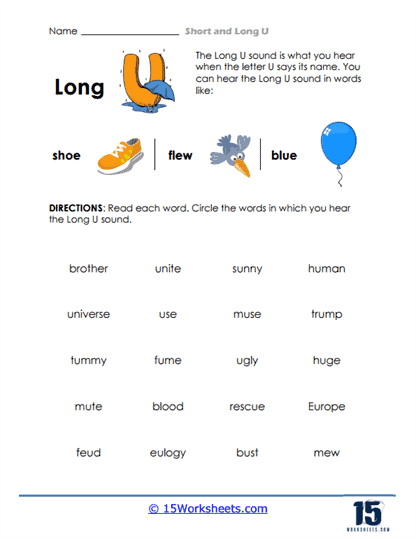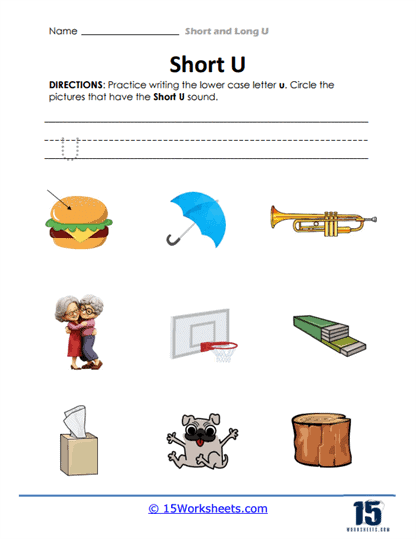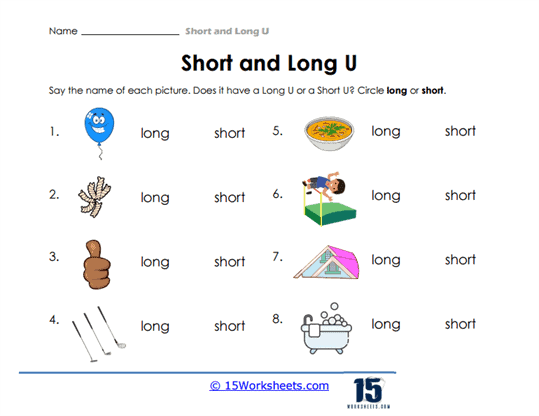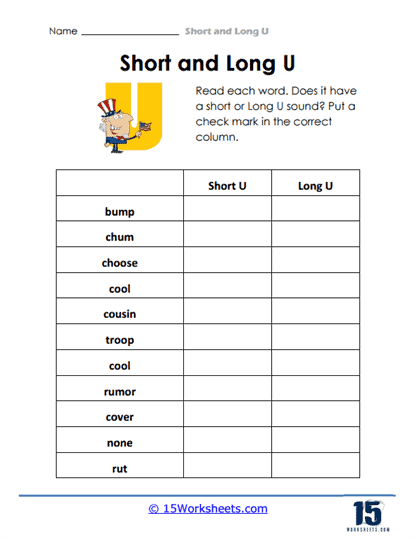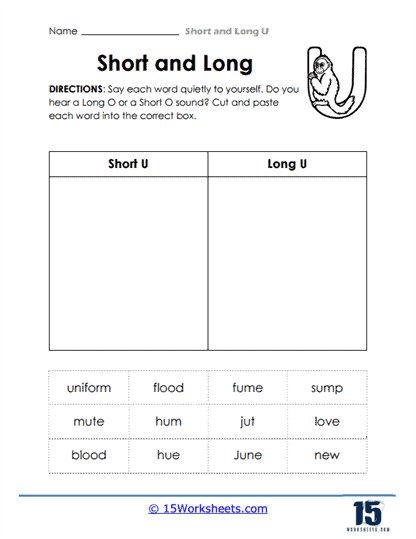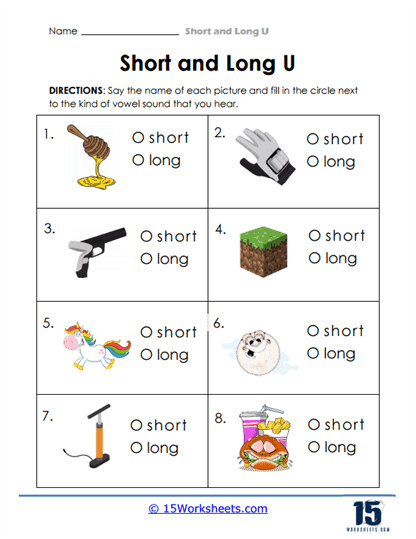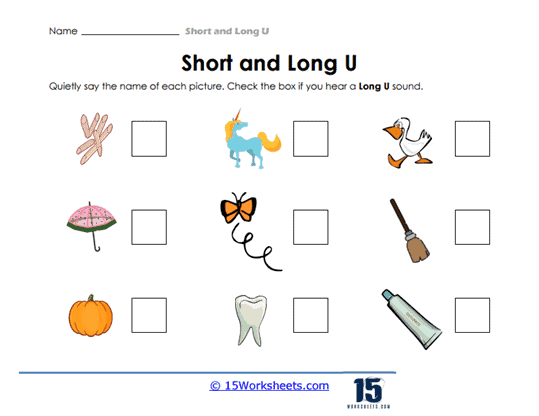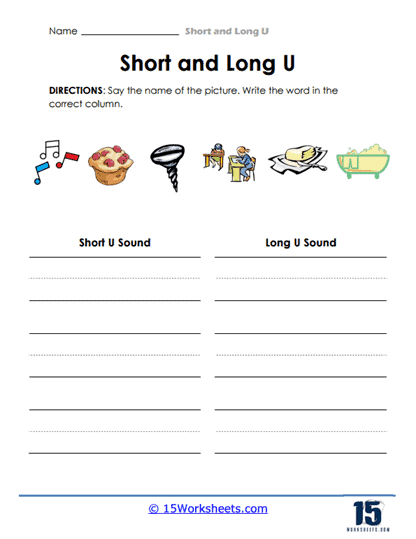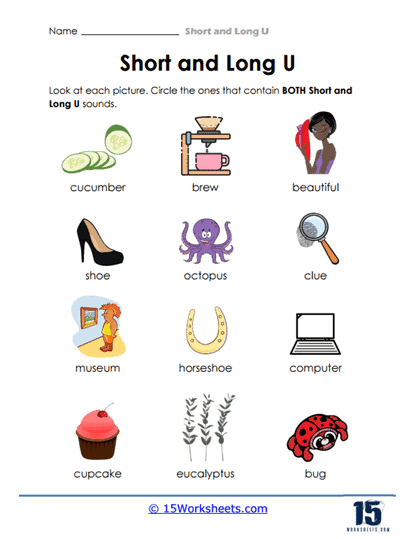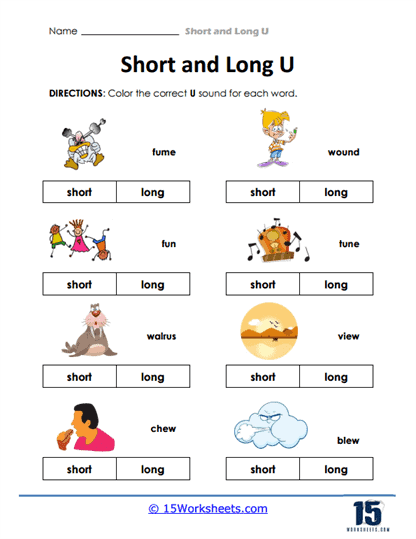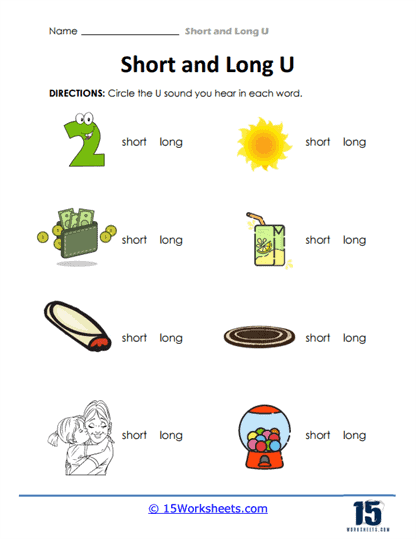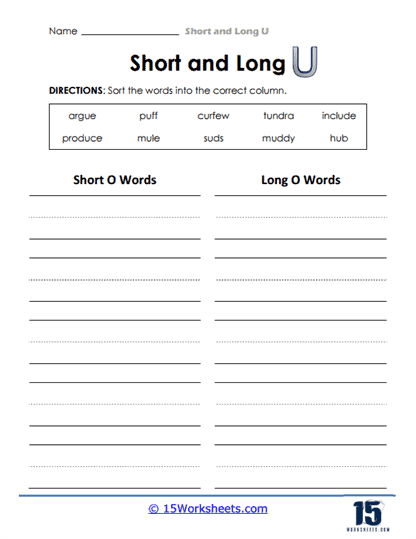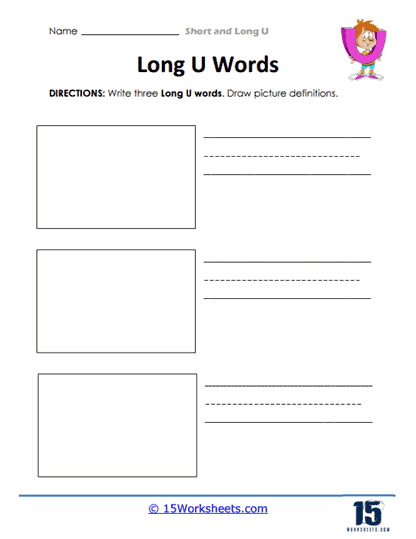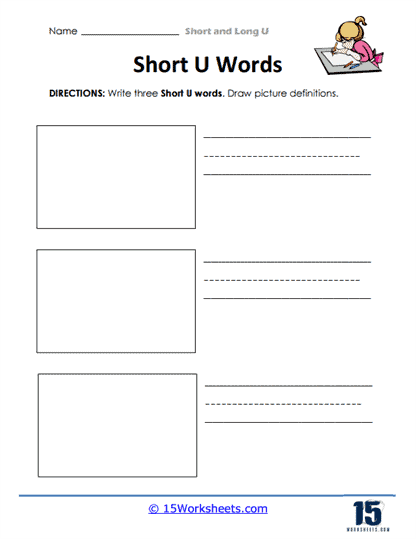Short and Long U Worksheets
All About These 15 Worksheets
In the realm of phonics and early literacy, understanding the distinction between short and long vowel sounds is a cornerstone skill. Among these vowel sounds, the short and long ‘U’ sounds are particularly important for young learners. Mastery of these sounds is essential for reading, spelling, and language development.
To empower students to excel in these foundational skills, we proudly present a collection of Short and Long U worksheets. These worksheets are thoughtfully designed to provide students with structured and engaging opportunities to practice and refine their understanding of short and long ‘U’ sounds.
What Are Short and Long U Sounds?
The short U and long U vowels have distinct sounds. The short U sound can be thought of as the “uh” in “cup.” It’s a brief, soft sound, and you can hear it in words like “mud,” “bun,” and “duck.” On the other hand, the long U has a more stretched-out pronunciation. It can sound like “yoo” as in “unicorn” or even “oo” as in “blue.” Words such as “music,” “use,” and “flute” showcase the long U sound. Essentially, the primary distinction between the two is how you pronounce the “U”: with the short U, it’s a quick utterance, while the long U elongates the sound.
These worksheets will help students learn to identify the words that make these different vowel sounds and learn to pronounce them properly in their work.
Examples of Short U Sounds
Here are three words that have the short “U” sound and how they can be used in sentences:
Word – Bun
Sentence – The baker made a fresh bun for my sandwich.
Word – Mug
Sentence – I love sipping hot chocolate from my favorite mug.
Word – Pup
Sentence – The little pup barked excitedly when it saw its owner.
Examples of Long U Sounds
And here are three words that have the long “U” sound:
Word – Tune
Sentence – I hummed along to the catchy tune on the radio.
Word – Cube
Sentence – She stacked the blocks into a perfect cube.
Word – Mule
Sentence – The mule carried heavy bags up the steep mountain.
Types of Exercises on These Worksheets
Circle the Word – There might be pictures of objects, and you’ll need to circle the ones that have either the short or long “U” sound. For instance, a picture of a “bus” (short U) or “unicorn” (long U).
Matching Games – You could be asked to draw lines or match words with the correct pictures. This helps you connect the sound of the word with its meaning.
Fill in the Blanks – These are like mini-stories with some words missing. Your task? Fill in the blanks using words with the correct “U” sound.
Sound Sorting – This is a sorting game where you might have a list of words. Your job is to put them into two groups – one for words with a short “U” sound and another for those with a long “U” sound.
Rhyming Words – This activity is a bit like a poetry game. You’ll be given a word, and you’ll need to find other words that rhyme with it. Some of them will have the short “U” sound, and some will have the long “U” sound.
Writing Stories – Sometimes, the best way to learn is to use your imagination! You might get a chance to write a short story using a list of words. This will help you remember the sounds better.
The Importance of Short and Long U For Students
Understanding the difference between short and long vowel sounds, especially the ‘U’ sound, is of paramount importance for several reasons:
- Reading Proficiency: Accurate recognition of short and long ‘U’ vowel sounds is fundamental for fluent reading. It allows students to decode words accurately and understand text effectively.
- Spelling Competence: Proficiency in distinguishing short and long ‘U’ vowel sounds enhances students’ spelling skills. When they can differentiate between these sounds, they are better equipped to spell words correctly.
- Phonemic Awareness: Recognizing short and long ‘U’ vowel sounds fosters phonemic awareness—the ability to identify and manipulate individual phonemes (sounds). This skill is crucial for literacy development and reading comprehension.
- Vocabulary Growth: Learning the nuances of short and long ‘U’ vowel sounds exposes students to a wider range of words, enriching their vocabulary and comprehension.
This collection of Short and Long U worksheets is a valuable resource for educators and parents committed to supporting their students’ phonics and literacy development. Proficiency in distinguishing between short and long vowel sounds, especially the ‘U’ sound, is a foundational skill that opens the doors to reading fluency, comprehension, effective spelling, and vocabulary growth.
By using these engaging worksheets, students will strengthen their ability to recognize and use short and long ‘U’ sounds with confidence. This collection is an investment in their future success, ensuring they have a solid foundation in phonemic awareness, phonics, spelling, and vocabulary.


